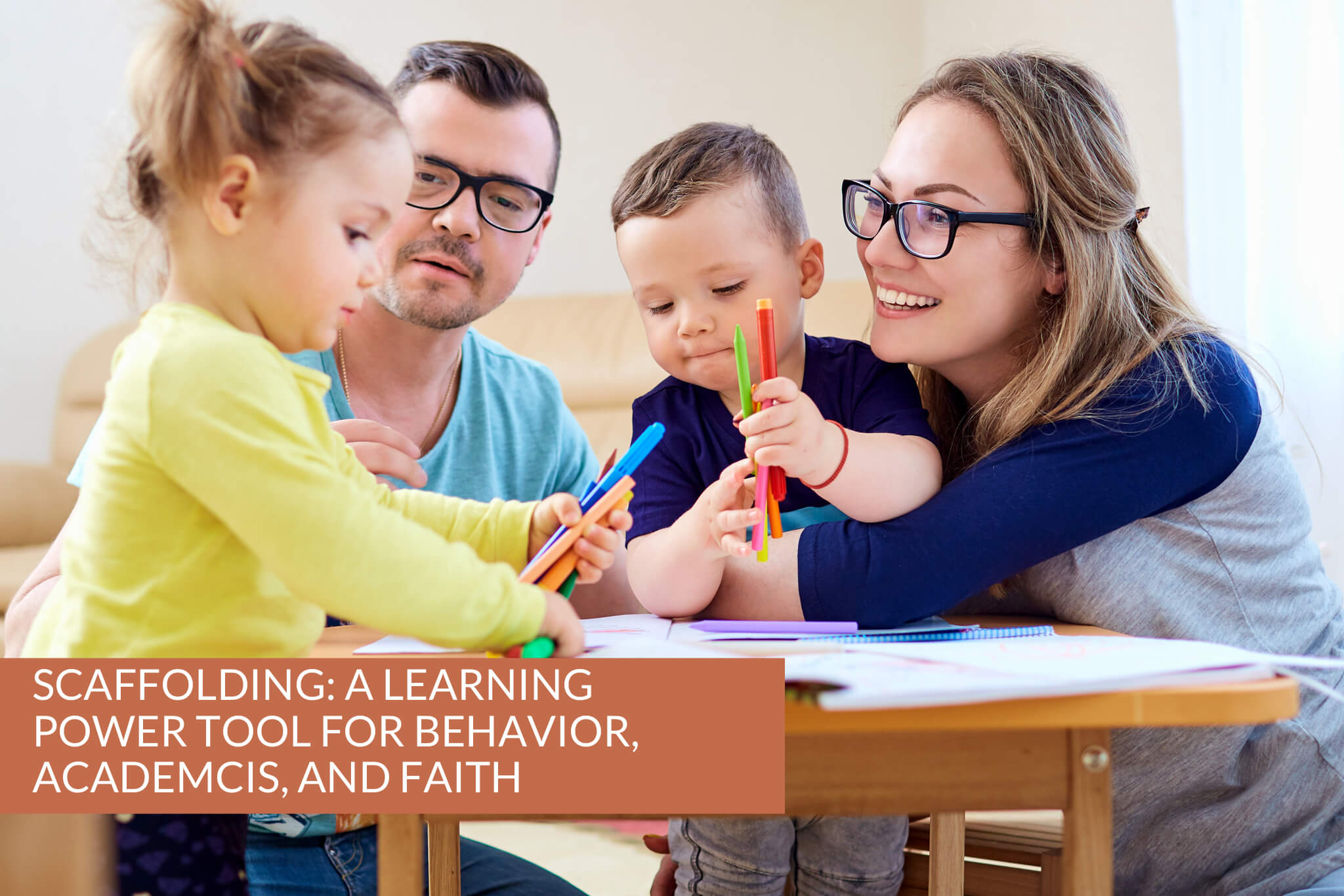
Understanding Scaffolding and How it Helps Kids Learn
Scaffolding, as a parenting tool, draws its metaphor from construction, where temporary structures are erected to support the building process until the structure can stand on its own. In the realm of child development, scaffolding refers to the supportive techniques and guidance provided by parents or caregivers to help children learn new skills or concepts. This strategy emphasizes the importance of providing just enough assistance to enable a child to accomplish a task independently, gradually reducing support as the child gains proficiency. You're already familiar with scaffolding when it comes to teaching children to read. First, you help them learn to recognize letters, then you help them learn the sounds of individual letters, then letter groups, and finally words.
Adaptable Support Strategies
Effective scaffolding involves recognizing a child's current level of understanding or skill and then offering appropriate support to help them progress further. This support can take various forms, such as breaking tasks into manageable steps, offering verbal prompts or cues, providing demonstrations, or offering constructive feedback. Importantly, scaffolding should be flexible and responsive to the child's individual needs, adjusting the level of support as necessary to promote optimal learning and development. Here’s another quick example of scaffolding in action:
Scene: A boy, Alex, sits on the floor struggling to tie his shoelaces.
Dad: (Observing Alex's attempts) Hey, Alex, it looks like you're trying to tie your shoelaces. That's great! Do you want some help?
Alex: (Frustrated) Yes, please!
Dad: Okay, let's break it down. First, make two bunny ears with the laces, like this. (Demonstrates)
Alex: Like this?
Dad: Perfect! Now, cross them over each other and pull one through the hole. Remember?
Alex: Oh, I think I got it! Now I’m going to pull them tight. (Successfully ties shoelaces) I did it!
Dad: Great job, Alex! You're getting the hang of it. Remember, if you ever need help, I'm here.
Meeting Kids Where They Are…
One key aspect of scaffolding is the notion of "zone of proximal development" (ZPD), a concept introduced by psychologist Lev Vygotsky. The ZPD refers to the difference between what a child can do independently and what they can achieve with the support of a more knowledgeable person, such as a parent or teacher. Scaffolding operates within this zone, providing the right amount of assistance to help children advance their skills and understanding.
…So They Can Grow From There!
Through scaffolding, parents not only facilitate their child's learning but also foster independence and confidence. By offering support tailored to the child's abilities and gradually allowing them to take on more responsibility, parents empower their children to tackle challenges with increasing autonomy. Ultimately, scaffolding nurtures a child's development by providing the necessary support structures to help them reach their full potential.
Using Scaffolding to Help Share the Gospel with Children
Scaffolding, as a parenting concept, can be a powerful tool when it comes to sharing the gospel of Jesus with children. Just as in other aspects of child development, scaffolding in this context involves providing supportive guidance tailored to the child's understanding and needs, gradually empowering them to grasp deeper spiritual concepts and develop a personal relationship with Jesus.
Laying the Foundation Through Storytelling
Initially, parents can lay the foundation by introducing children to simple, age-appropriate stories from the Bible that convey key attributes of God and His character. Through storytelling, parents can scaffold understanding by breaking down complex Biblical narratives into digestible segments, emphasizing the trustworthiness of God as the hero of the story, and inviting children to think about how these stories relate to their own lives.
Initially, parents can lay the foundation by introducing children to simple, age-appropriate stories from the Bible that convey key attributes of God and His character. Through storytelling, parents can scaffold understanding by breaking down complex Biblical narratives into digestible segments, emphasizing the trustworthiness of God as the hero of the story, and inviting children to think about how these stories relate to their own lives.
Engaging in Meaningful Discussions
As children grow and mature, parents can scaffold their spiritual development by engaging them in meaningful discussions about faith and what it means to follow Jesus. This might involve asking open-ended questions to encourage critical thinking, such as "Where did you see God at work today?" or "What do you think Jesus would do in this situation?" or "How can we show love and kindness to others, just as Jesus did?" By prompting children to reflect on their beliefs and values, parents can help them internalize the principles of their faith and apply them to their daily lives.
As children grow and mature, parents can scaffold their spiritual development by engaging them in meaningful discussions about faith and what it means to follow Jesus. This might involve asking open-ended questions to encourage critical thinking, such as "Where did you see God at work today?" or "What do you think Jesus would do in this situation?" or "How can we show love and kindness to others, just as Jesus did?" By prompting children to reflect on their beliefs and values, parents can help them internalize the principles of their faith and apply them to their daily lives.
Providing Experiential Learning Opportunities
Most Christian parents are already scaffolding their children's understanding of the Gospel by providing opportunities for experiential learning and participation in faith practices and rituals. Attending church services together, participating in prayer and worship, and engaging in acts of service and outreach as a family are all ways you can help your children learn what it means to live as a follower of Jesus, deepen their connection to their faith community, and develop a sense of belonging within the larger body of Christ.
Most Christian parents are already scaffolding their children's understanding of the Gospel by providing opportunities for experiential learning and participation in faith practices and rituals. Attending church services together, participating in prayer and worship, and engaging in acts of service and outreach as a family are all ways you can help your children learn what it means to live as a follower of Jesus, deepen their connection to their faith community, and develop a sense of belonging within the larger body of Christ.
Ultimately, the goal of scaffolding in sharing the Gospel with children is to nurture a foundation of faith that centers God as wholly trustowrthy. By providing structured guidance, meaningful engagement, and opportunities for personal reflection and growth, parents can start planting the seeds of a deeply-rooted, robust relationship with Jesus.












0 Comments